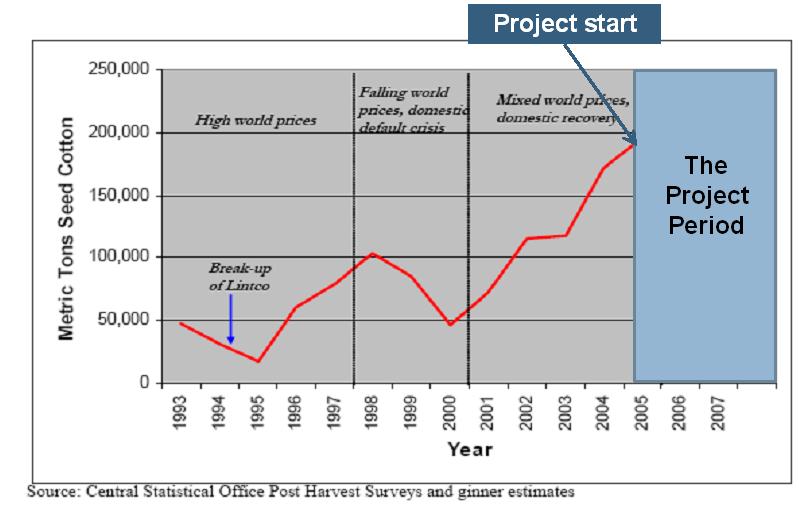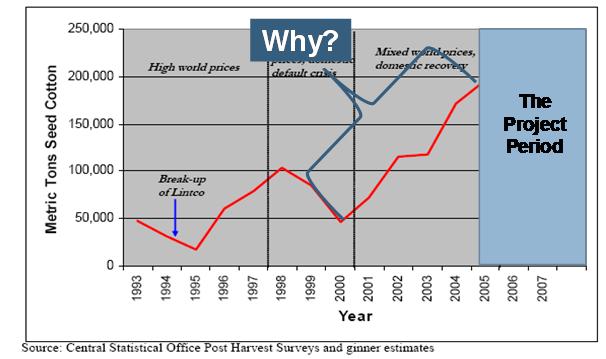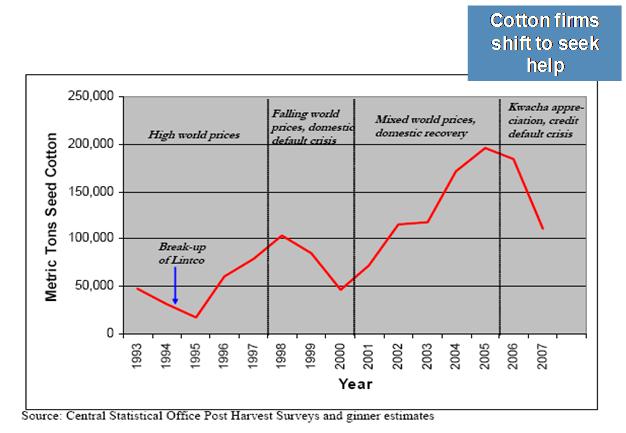Failure
Between 2008 and 2009, the EWB Malawi Water and Sanitation team went through a lengthy and winding strategic narrowing process. This process brought our organization from working with high breadth across the sector and little focus, partnering with nearly any organization in the sector who would work with us, to a focused change strategy with defined goals and fewer stakeholders. In late 2009, our team faced a leadership transition – the leader and manager of the program was finishing with EWB leaving space for other potential leaders in the organization’s pipeline to step up. The process of transition was happening at a time of massive ambiguity – we were aiming to narrow our strategy into something containable from something unwieldy while trying to consider many different perspectives, which meant all of our team’s conversations were characterized by uncertainly and complexity.
What we did and what went wrong
At this point of change, our team faced two challenges at once: defining a complex change strategy, which was ambiguous, and managing a leadership transition, for which we had no defined process. Our team faced a cyclic problem – we needed to invest in leadership transition, but because our strategy definition process was so ambiguous, we never felt comfortable investing in that process. How do you set up someone to transition into a job managing a strategy that you haven’t defined yet? As a result, the transition process was forced to be as ambiguous as the strategy, meaning that leaders stepping into the process were unclear of what was expected of them.
Western development workers who step into leadership roles in a place like Malawi must “unlearn” many leadership instincts they have. For example, it is important for team leaders to resist the temptation to “sell” our work to all sector stakeholders all the time as this is not seen as appropriate until you’ve built the right relationship in the Malawian water sector. Insights such as there are very difficult to characterize in a job description or in an orientation meeting. Rather, they have to be experientially learned and often “coached out” by others with more experience. The ability to lead in such an environment is as much about who you are being as it is about what you are doing, and the type of feedback one needs to receive to grow in such areas requires a long arc of mentoring of new leaders before they being playing the role.
We did not invest as a system of people in leadership succession early enough. The absence of an explicit and early leadership transition process meant that we did not adequately invest in the up-front skills, relationships, and team dynamics building that needed to take place before transitioning new leaders into the role. By waiting too long to recognize the gravity what was needed with an organization focused on highly complex change, we created more work for ourselves and failed to take full advantage of the opportunities our team already had.
What this failure cost us
This failure did not cause damage as such, but led to a number of missed opportunities and a greater momentum loss than was necessary for our team. To this day, there are relationships in the sector that have laid fallow for the past year that our team has yet to revive due to the momentum that was lost at the end of 2009. For example, one of our team’s very difficult to achieve change goals is to enter a highly collaborative relationship with one of the National Ministries involving the secondment of one of our staff at that level.
In addition, internal challenges were caused that led to increase management complexity and slower decision making. The rocky leadership transition process was distracting for our team, which diverted much needed energy away from our very complex process of defining success for our strategy. Ironically, this undermined our team’s goal of increasing strategic clarity, which was the main outcome we wanted from our strategic definition process. The mandate and strategy for our CLTS program suffered as a result of that distraction, and as such we have failed to advance our positioning in that part of the sector much further than it was at the end of 2009.
Learning
So what?
Our African Programs teams should recognize that leading in a change environment as complex as ours is not something that can be easily explained via a job description or learned swiftly, and failure to create processes to replace team leadership capacity leads to unnecessary pain for the team and reduced impact. Intentional investment in processes is required that allow for people in the pipeline to be able to play the complex role at the time of transition. The key outcomes of this investment should be early clarity on role definition and expectations in a transition process, preservation of key external relationships, and strong investment in the abilities that new leaders must have to succeed, which usually cannot be explained – they must be experienced and “coached out.”
Follow up action – this is the follow up action from EWB African Program management in response to this lesson:
Management is a crucial component of a development organisation. This is a learning EWB has had with our partner organisations. This is why a lot of our work focuses on improving management.
Management as a lynchpin is no different with EWB.
In the past year we’ve undergone (or are undergoing) management transitions in four of our five teams.
EWB’s model for creating change in Africa is based around the concept that many high functioning companies such as McKinsey follow. We both hire young, highly talented people. We expect a high turn-over of these people to allow them to continue seeking out opportunities that will bring about substantial personal and professional growth. To retain knowledge and continue making progress we both hire management (team leaders) as permanent staff.
However, being a permanent staff while living in Africa is not easy. In fact, it’s not realistic. It’s difficult to live away from family for an extended amount of time, no matter the financial compensation. So for the past couple years we’ve asked for a 2 year minimum commitment as a team leader.
However, we’re starting to re-think this.
It’s incredibly difficult to pass off a half-finished change from one person to another. The knowledge and experience which is often tacit is lost despite attempts to document it. The founder’s energy, which can’t be bottled, is also lost sometimes causing the team to loose momentum.
At the same time, some people are great a bringing an idea from zero to twenty percent, others thirty to seventy percent, etc. And sometimes a change in leadership can catalyze needed changes in strategy and direction.
So what can be done?
These experiences have caused us to re-think our management pipeline. The current incoming and outgoing team leaders will gather January 18–28th to discuss this and other management issues facing EWB.
- Should team leaders only be hired internally (from within the team)?
- Should team leaders be expected to stay on for the life-time of their program?
- Whose responsibility is the team leadership transition? The outgoing team leader who ‘owns’ the team or the Directors of African Programs and other team leaders who will be around to experience the effects of the transition?


